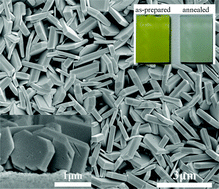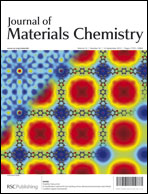Hydrothermal synthesis and photoelectrochemical properties of vertically aligned tungsten trioxide (hydrate) plate-like arrays fabricated directly on FTO substrates†
Abstract
Without the assistance of a WO3 seed layer, a uniform tungsten trioxide hydrate (WO3·H2O) plate-like array film was grown directly on bare fluorine-doped


 Please wait while we load your content...
Please wait while we load your content...